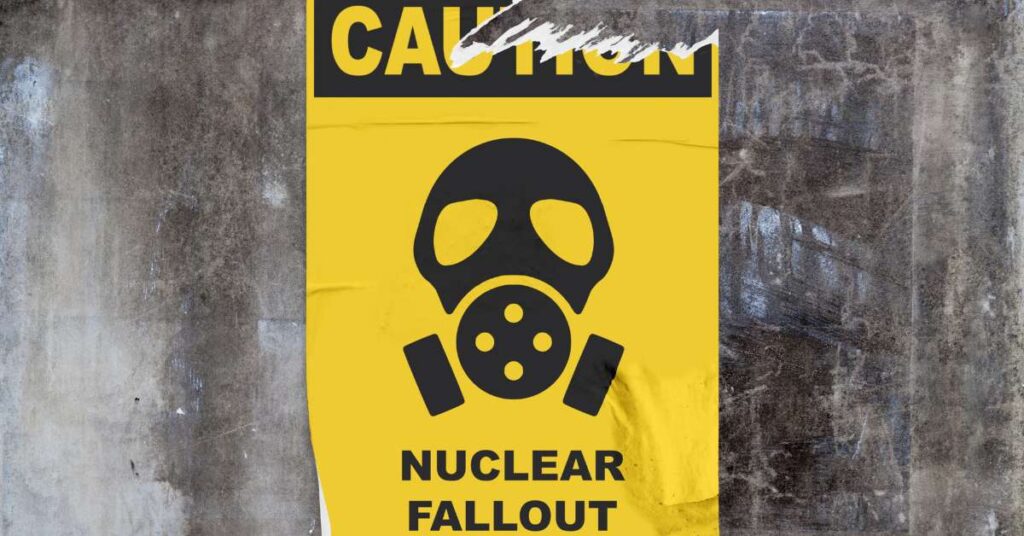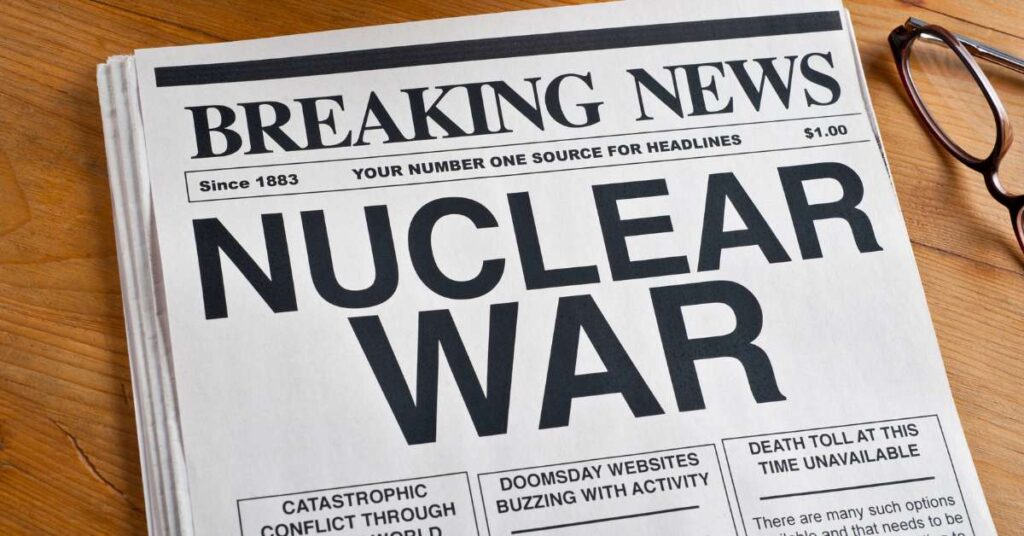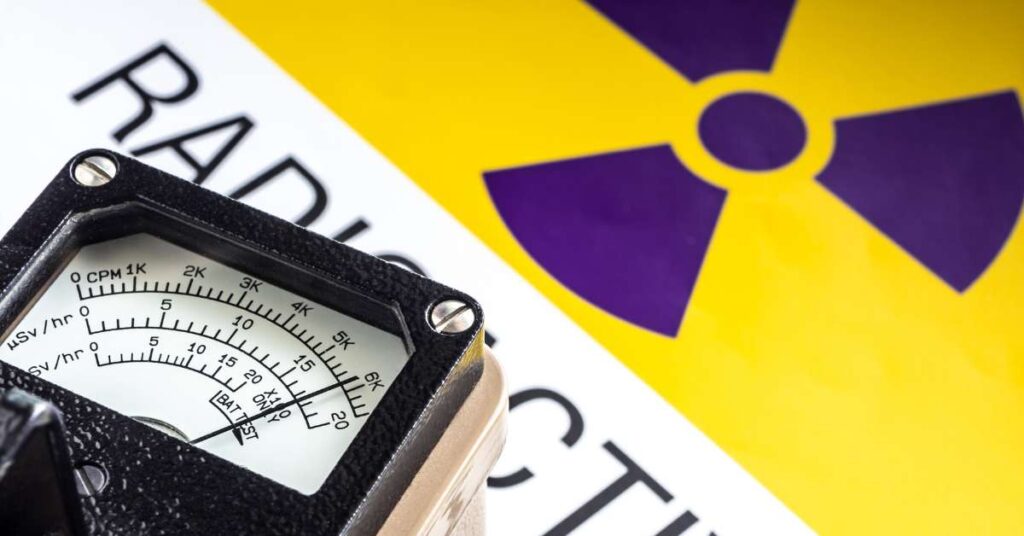How to Prepare for Nuclear War (With Illustrations)
The threat of nuclear conflict, while often distant, remains a part of modern geopolitical tensions. This sobering reality necessitates a certain level of preparedness for individuals and communities. How does one even begin to prepare for a nuclear war?
EXPOSED- All Americans Will Lose Their Home, Income And Power By September 30, 2025
Preparing for nuclear war involves understanding the immediate and long-term impacts, creating safe spaces like fallout shelters, stockpiling essential supplies, planning for family safety, and navigating post-blast scenarios.
Understanding how to prepare for nuclear war can be overwhelming, but knowing what to do can be the difference between life and death. Dive in to fortify your knowledge and be prepared for any possibility.
Understanding the Different Types of Nuclear Emergencies
In an era where nuclear technology plays a pivotal role in energy generation and defense, understanding the types of nuclear emergencies is crucial. These emergencies, although rare, can have far-reaching and devastating effects on human health, the environment, and global politics.

Nuclear Power Plant Accidents
Nuclear power plant accidents are perhaps the most recognized form of nuclear emergency. These incidents occur due to failures in systems, procedures, or components within nuclear power plants.
The Chernobyl disaster in 1986, caused by a flawed reactor design operated with inadequately trained personnel, and the Fukushima Daiichi nuclear disaster in 2011, triggered by a massive tsunami, stand as stark reminders of the potential risks.
These events not only release harmful radioactive materials into the environment but also trigger long-term socio-economic challenges and health issues.
Radiological Dispersal Device (RDD) or “Dirty Bomb”
The threat of a “dirty bomb” involves non-state actors using conventional explosives to disperse radioactive materials. This type of attack aims more to create panic and disruption rather than cause significant casualties.
BREAKING! They Misread This Bible Text for 2,000 Years — U.S. Military Raid Uncovers Hidden Vatican Chamber With the Real ‘Halo Frequency’ Translation!
Nuclear Weapon Accidents
Accidents involving nuclear weapons, though exceedingly rare, carry the potential for immense destruction. These accidents can occur during the transport, storage, or handling of nuclear weapons.
A mishap in this category could lead to accidental detonation or leakage of radioactive materials. The consequences would be catastrophic, both in terms of immediate loss of life and long-term environmental impact.
Nuclear Material Theft and Sabotage
This type of emergency involves unauthorized access, theft, or deliberate damage to nuclear materials or facilities. The primary concern is that stolen nuclear materials could be used to create a nuclear weapon or a dirty bomb by non-state actors or terrorists.
Another aspect of this emergency is sabotage, where individuals or groups intentionally damage a nuclear facility, potentially causing a release of radioactive material. This could result from insider threats, cyber-attacks on nuclear control systems, or physical attacks.
Preventive measures include strict security protocols, background checks for personnel, and robust cyber security systems.
Transportation Accidents Involving Nuclear Materials
This refers to accidents that occur during the transport of nuclear materials, such as uranium, plutonium, or spent nuclear fuel. These materials are frequently moved between mines, processing facilities, reactors, and storage sites.
Risks include the accidental release of radioactive material due to collisions, fires, or other mishaps during transport. While transportation containers are designed to be extremely robust, severe accidents could compromise their integrity.
Emergency response involves containment, evacuation if necessary, and decontamination. Transport routes are often chosen to minimize the risk to populated areas.
Criticality Accidents
A criticality accident occurs when nuclear material accidentally reaches a critical mass and starts a chain reaction, like in a nuclear reactor, but in an uncontrolled environment. This can emit lethal doses of radiation.
These accidents are rare and usually occur in fuel processing facilities or research labs. They are often the result of handling errors or miscalculations involving highly enriched fissile material.
Immediate response involves evacuating the area and then assessing the extent of the radiation release. Long-term responses include reviewing safety protocols and implementing additional safeguards.
Nuclear Fallout from Detonations

Nuclear fallout refers to the radioactive particles that ascend into the atmosphere after a nuclear explosion and then fall back to Earth. This can happen after a nuclear bomb test or in a nuclear war scenario.
The extent and severity of the fallout depend on the size of the bomb, the altitude of the explosion, and atmospheric conditions. Fallout can spread over vast areas, contaminating land, water, and air, and can lead to long-term health issues like cancer.
Emergency measures include evacuation, providing iodine tablets to prevent thyroid cancer, establishing safe zones, and conducting long-term environmental cleanup and health monitoring.
Characteristics of A Nuclear Attack

A nuclear attack, involving the detonation of a nuclear weapon, is a catastrophic event with unique and devastating characteristics. Understanding these characteristics is crucial when you prepare for a nuclear war. Here are the key characteristics of a nuclear attack:
Explosion and Blast Wave
The most immediate effect of a nuclear detonation is a powerful explosion, creating an intense blast wave. This wave can demolish buildings, cause widespread destruction, and result in numerous casualties within a significant radius from the blast center.
A nuclear explosion releases an immense amount of thermal energy, resulting in a fireball. This thermal radiation can cause severe burns and ignite fires over a wide area, contributing to a secondary wave of destruction beyond the initial blast.
Ionizing Radiation
The detonation of a nuclear weapon produces intense ionizing radiation, including gamma rays. This radiation can cause immediate radiation sickness in people exposed at close range and increase the long-term risk of cancer.
Electromagnetic Pulse (EMP)
A nuclear explosion generates a high-altitude electromagnetic pulse (EMP), which can disrupt or damage electronic equipment and power grids over a vast area, leading to widespread communication and infrastructure failures.
Nuclear Fallout
Fallout includes radioactive particles that are lifted into the atmosphere by the explosion and then fall back to Earth. This radioactive debris can contaminate large areas, posing long-term health risks through exposure and contamination of food and water supplies.
Psychological Impact
The fear and psychological trauma associated with a nuclear attack are profound. The prospect of immediate widespread destruction, long-term environmental contamination, and societal disruption contributes to significant mental health challenges for survivors and responders.
Environmental and Global Impact
A nuclear attack can have long-lasting environmental consequences. Radioactive contamination can render areas uninhabitable for extended periods, and the potential for a “nuclear winter,” where smoke and soot enter the atmosphere and reduce global temperatures, can have global climatic effects.
Political and Social Ramifications
The detonation of a nuclear weapon carries significant political implications, potentially escalating conflicts and impacting international relations. The social ramifications include mass displacement, breakdown of societal structures, and long-term health care challenges for affected populations.
How to Prepare for Nuclear War
When you prepare for nuclear war, you are maximizing your chances of survival in the face of potential catastrophe. Beyond survival, preparedness for everyday issues helps reduce panic. A prepared individual can make informed decisions, ensuring safety even during chaos.
Proper preparation can be the key to survival in a nuclear emergency. This section shares crucial strategies, including building an emergency supply kit and formulating a family emergency communications plan, to ensure you and your loved ones are well-prepared for any nuclear eventuality.
Building an Emergency Supply Kit

The cornerstone of nuclear preparedness involves creating a comprehensive emergency supply kit. This kit should include basic supplies like water, non-perishable food, a first-aid kit, a flashlight, a battery-powered or hand-crank radio, extra batteries, and personal hygiene items.
Additionally, consider including items specifically for nuclear emergencies, such as a spare change of clothes for each family member and a trash bag for contaminated clothing.
Here’s a list of items you should have in your kit:

Creating a Family Emergency Communications Plan
Communication can be challenging in emergencies. Formulate a plan detailing how family members will contact each other and where they will meet if separated. This plan should include an out-of-state contact to relay messages and identify safe places to stay in case of evacuation. Familiarize yourself with the emergency plans of schools, workplaces, and care facilities.
Immediate Actions During a Nuclear Emergency
When a nuclear emergency strikes, quick and decisive action is imperative. This section focuses on the immediate steps to take, such as following emergency alerts and applying the principles of time, distance, and shielding, to minimize the risks associated with nuclear exposure.
Following Emergency Alerts
In the event of a nuclear emergency, timely and accurate information is crucial. Have multiple ways to receive emergency alerts, like through the FEMA app or local emergency management notifications. Stay tuned to local media and official channels for real-time information (NRC guidance).
Principles of Time, Distance, and Shielding
The key to reducing radiation exposure is minimizing time spent near the source, maximizing distance from it, and using shielding materials, such as thick walls, between you and the radiation. If outside during a nuclear blast, get inside immediately and stay away from windows

Finding and Creating Safe Shelter
In the chaos of a nuclear incident, finding safe shelter or deciding when to evacuate can be life-saving decisions.
The CDC advises getting inside a sturdy building quickly in a radiation emergency. The safest places are central areas of middle floors in multi-story buildings or basements, bomb shelters, and underground bunkers in houses. Avoid windows to minimize exposure to radiation.

Evacuation Plans and Considerations
Evacuation might be necessary depending on the severity and proximity of the nuclear event. Follow the guidance of local authorities regarding evacuation routes and destinations. It’s crucial to stay informed through reliable sources and follow instructions promptly.
You might be interested in discovering essential strategies on surviving nuclear war without a bunker.
Post-Emergency Procedures
The aftermath of a nuclear emergency presents its own set of challenges, including decontamination and addressing long-term health effects. This section provides guidance on post-emergency procedures, such as decontamination processes and seeking medical assistance, essential for navigating the road to recovery after a nuclear event.
Decontamination Processes
After a nuclear event, it’s essential to reduce radiation exposure through decontamination. This might involve removing and bagging contaminated clothing and showering to wash off radioactive particles.
Here’s how to effectively self-decontaminate:

Long-Term Health Considerations and Recovery
Be aware of the potential long-term health effects of radiation exposure. Follow-up with healthcare providers and stay informed about health advisories and resources available for recovery and support.
Exploring Alternative Preparedness Techniques
While traditional preparation methods have their place, embracing modern technologies and strategies can enhance your survival capabilities. Moreover, understanding varying perspectives can provide a holistic approach to nuclear preparedness.
Modern Technologies: Geiger Counters and Other Equipment

Incorporate technology into your preparedness plan. Geiger counters, for instance, allow real-time monitoring of radiation levels.
Consider investing in solar-powered chargers or backup battery systems to keep essential devices running.
While technology offers advanced tools, always have manual backups, ensuring functionality even when modern systems fail.
Evacuation Strategies: Urban vs. Remote Locations
Your evacuation plan will vary based on location. Urban areas, with their dense populations, might necessitate swift evacuation, while remote areas offer natural isolation.
Plan routes that avoid potential hotspots, ensuring safety during movement. Consider establishing multiple safe points, allowing flexibility based on the evolving situation.
Traditional Wisdom vs. Scientific Preparations
While science provides proven strategies, traditional wisdom and ancestral knowledge can offer valuable insights. For example, indigenous populations have survived in harsh environments for centuries, relying on native techniques.
Merge the best of both worlds, ensuring a diverse and comprehensive approach to preparation and survival.
Embracing Preparedness Without Fear
The idea of preparing for a nuclear event, while daunting, isn’t about fostering fear; it’s about embracing empowerment. Knowledge and preparation are your best allies, turning the unimaginable into a challenge you’re equipped to face.
Taking proactive steps ensures not only your survival but also a semblance of normalcy in a post-nuclear world. Remember, it’s the combined strength of individual preparedness and community unity that will light the path forward in the face of the unthinkable. Stay informed, stay prepared, and above all, stay united.
Anyone can join.
Anyone can contribute.
Anyone can become informed about their world.
"United We Stand" Click Here To Create Your Personal Citizen Journalist Account Today, Be Sure To Invite Your Friends.
Before It’s News® is a community of individuals who report on what’s going on around them, from all around the world. Anyone can join. Anyone can contribute. Anyone can become informed about their world. "United We Stand" Click Here To Create Your Personal Citizen Journalist Account Today, Be Sure To Invite Your Friends.
LION'S MANE PRODUCT
Try Our Lion’s Mane WHOLE MIND Nootropic Blend 60 Capsules
Mushrooms are having a moment. One fabulous fungus in particular, lion’s mane, may help improve memory, depression and anxiety symptoms. They are also an excellent source of nutrients that show promise as a therapy for dementia, and other neurodegenerative diseases. If you’re living with anxiety or depression, you may be curious about all the therapy options out there — including the natural ones.Our Lion’s Mane WHOLE MIND Nootropic Blend has been formulated to utilize the potency of Lion’s mane but also include the benefits of four other Highly Beneficial Mushrooms. Synergistically, they work together to Build your health through improving cognitive function and immunity regardless of your age. Our Nootropic not only improves your Cognitive Function and Activates your Immune System, but it benefits growth of Essential Gut Flora, further enhancing your Vitality.
Our Formula includes: Lion’s Mane Mushrooms which Increase Brain Power through nerve growth, lessen anxiety, reduce depression, and improve concentration. Its an excellent adaptogen, promotes sleep and improves immunity. Shiitake Mushrooms which Fight cancer cells and infectious disease, boost the immune system, promotes brain function, and serves as a source of B vitamins. Maitake Mushrooms which regulate blood sugar levels of diabetics, reduce hypertension and boosts the immune system. Reishi Mushrooms which Fight inflammation, liver disease, fatigue, tumor growth and cancer. They Improve skin disorders and soothes digestive problems, stomach ulcers and leaky gut syndrome. Chaga Mushrooms which have anti-aging effects, boost immune function, improve stamina and athletic performance, even act as a natural aphrodisiac, fighting diabetes and improving liver function. Try Our Lion’s Mane WHOLE MIND Nootropic Blend 60 Capsules Today. Be 100% Satisfied or Receive a Full Money Back Guarantee. Order Yours Today by Following This Link.








